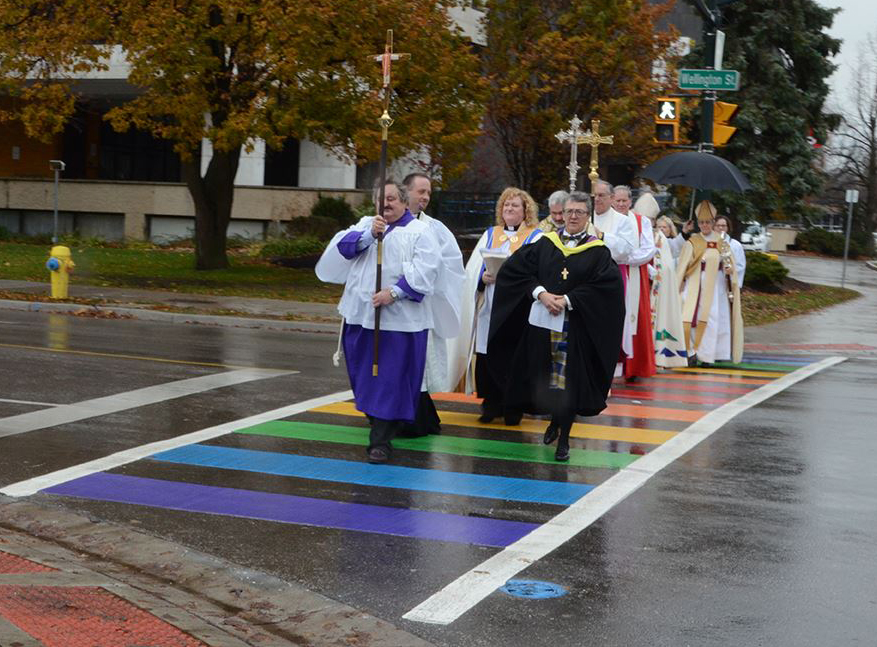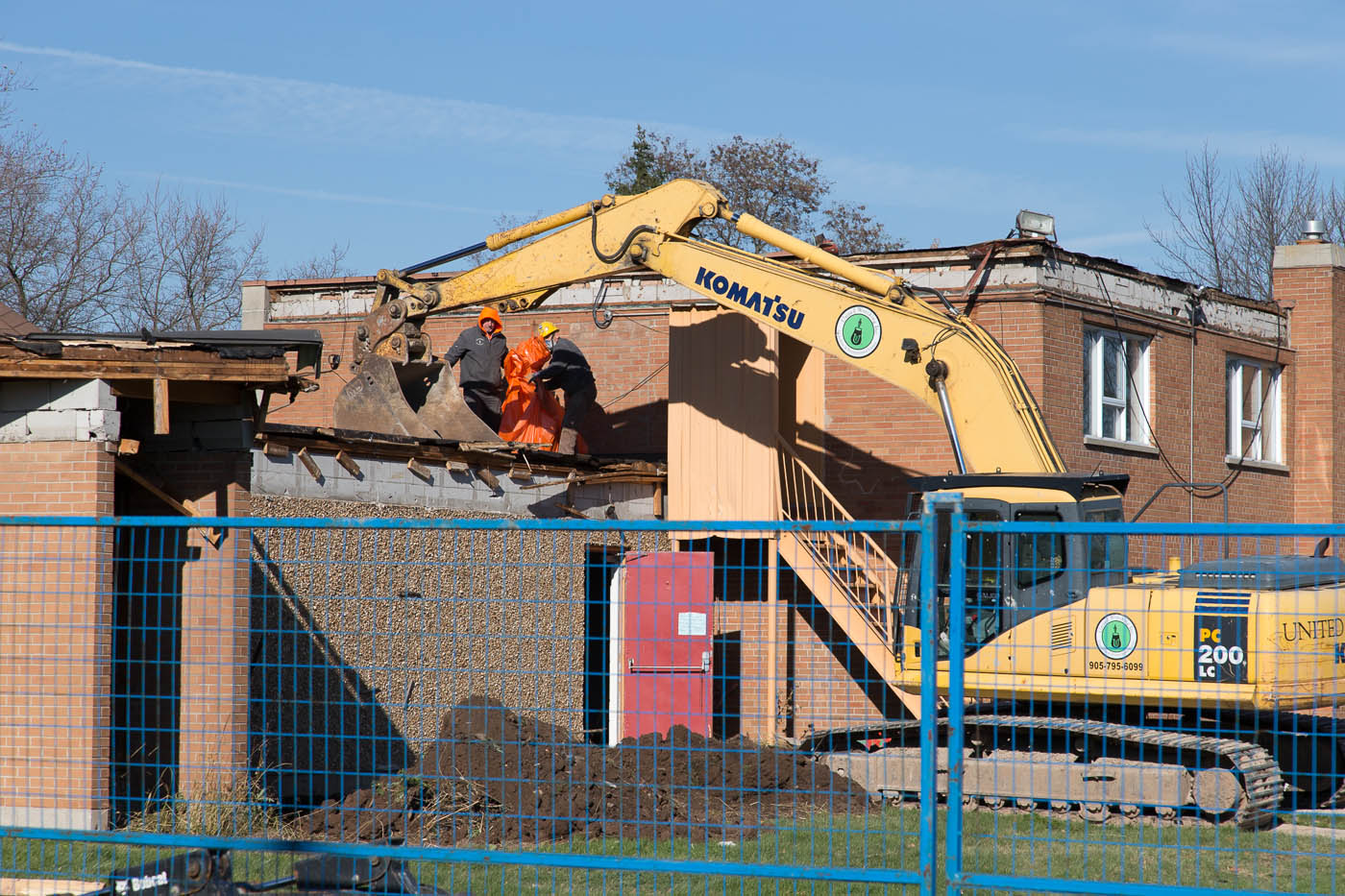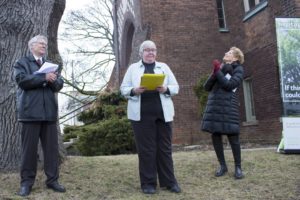What is a bishop to do when his diocese no longer has the money to pay for clergy salaries or building maintenance, when members of his parishes are either fleeing or dying? Other than donning a rainbow mitre and, with an increasingly embarrassing air of desperation, be so inclusive the main requirement for membership is to believe in anything, the only thing left is to spin the truth so brazenly that there is, as Joseph Goebbels noted, “a certain force of credibility” to the underpinning lie.
Thus, when the Diocese of BC has to sell buildings just to stay afloat and maintain pension funds, the church’s mission, according to Matthew 28:19 using the Standard New Amplified Revised Liberal (SNARL) translation, becomes:
“Go ye therefore, and teach all nations, and build socially, affordable housing in the name of the Father, and of the Son, and of the Holy Ghost”
From here:
The Anglican church building in Ladysmith, formerly St. John the Evangelist, will become a seniors’ housing complex.
Right Rev. Logan McMenamie, Bishop of the Diocese of British Columbia, said Monday the move to sell the church to the Ladysmith Resources Centre Association for social housing, was made in the spirit of fulfilling the Christian mission of the church.
“The ministry of the Anglican church will not end,” said McMenamie. “Socially, affordable housing is a big priority for the diocese as we move ahead.”
The Ladysmith Resources Centre Association plans on redeveloping the site to create 30-40 units of affordable housing dedicated to seniors, people with developmental disabilities and others who have trouble with the rental market.



 using diesel fume spewing bulldozers to demolish its churches:
using diesel fume spewing bulldozers to demolish its churches: From
From